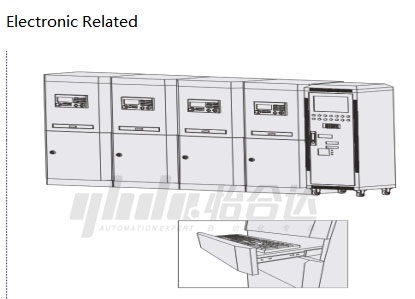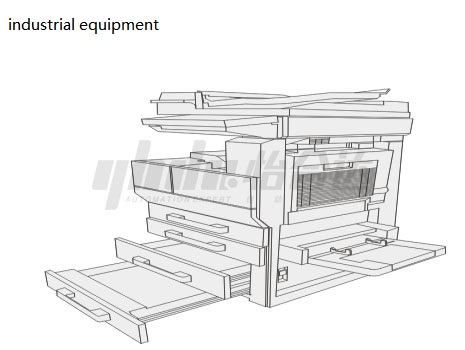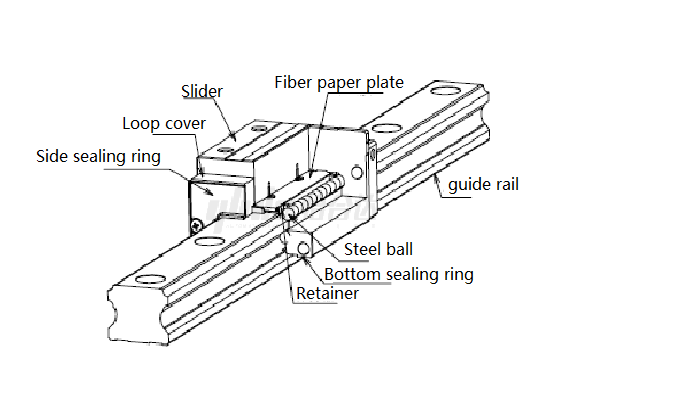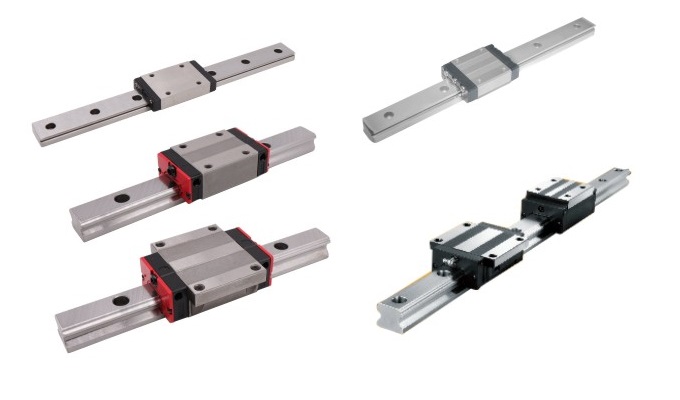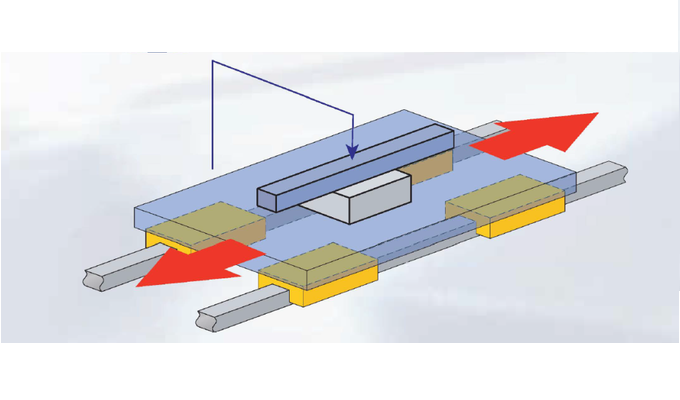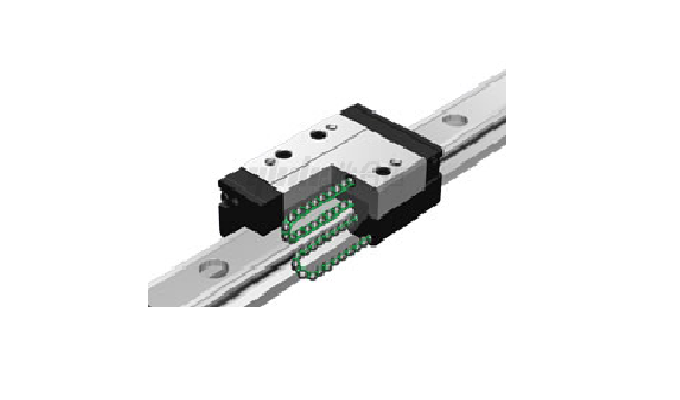Sliding Rail Definition
Industrial sliding rail is a hardware device mainly designed to achieve linear reciprocating motion of the bearing part's inner rail (or slider). It plays a crucial role in the fields of machinery and manufacturing by providing support and guidance for smooth movement of various moving components.
Components of Sliding Rail
The industrial sliding rail consists of multiple components, including inner rail, outer rail, center rail, ball bearings, and retaining bracket (or slider, sliding rail, roller). These components work together to enable the sliding rail to bear weight and achieve smooth sliding.
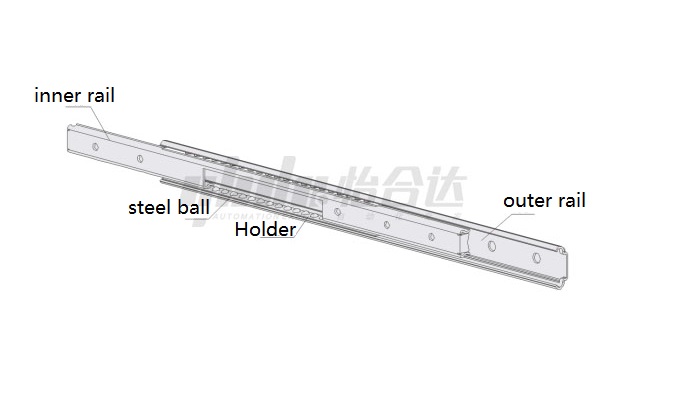
Applications
Industrial sliding rails are widely used in various fields, including but not limited to the following scenarios:
SMT (Surface Mount Technology) peripheral equipment, such as pick-and-place machines.
3C (Computer, Communication, Consumer electronics) testing equipment.
Medical equipment, such as operating tables and examination devices.
3D printers, used for positioning and moving the build platform or printhead.
Automated vending machines, for providing and retrieving goods.
Logistics and warehousing equipment, for transporting goods.
Machine tools, for controlling the movement of workpieces or cutting tools.
Features of Sliding Rail
Telescopic sliding rails save installation space and are suitable for limited spaces.
Roller sliding rails can be joined to achieve an extended stroke, catering to different working distances.
Roller sliding rails can bear force from multiple directions, providing flexible motion support.
Grease-free sliding rails require no maintenance, reducing regular maintenance costs.
Grease-free sliding rails operate silently, minimizing noise interference.
How to Choose the Right Sliding Rail Type
Points to Consider:
The maximum allowable load parameter is tested with the inner rail at its maximum stroke, considering the center position of the sliding rail. When installing two sliding rails and distributing the load uniformly on the bearing surface, the maximum load of the two sliding rails is equivalent to twice the load capacity of a single sliding rail.
Avoid concentrated loads at the outer end of the inner rail, as such load distribution may cause damage to the sliding rail.


Functionality Selection: Select the required functions based on the application scenario, such as open lock, close lock, open/close lock, open hold, close hold, inner rail extraction, damping closure, rebound, and interlock. If no specific functionality is required, this aspect can be disregarded.
Stroke: Choose the appropriate stroke value based on the distance the component or drawer needs to move.
Load Capacity: Select the suitable sliding rail load capacity according to the weight of the assembled component or equipment. For cases requiring force-distance, roller sliding rails can be chosen.
Length and Cross-section: Choose the appropriate sliding rail length and cross-section size, considering the occupied space, while meeting the requirements of load capacity and stroke.
Installation
Sliding rail installation can be categorized as good, poor, or not feasible. Parallel installation of sliding rails is crucial, and special attention should be given to the impact of installation methods on load-bearing.


Maintenance
Roller sliding rails and grease-free sliding rails (with plastic components inside the slider)
These types of sliding rails do not require the addition of lubricating grease during their lifecycle. Roller sliding rails with wear can have their clearance adjusted by their guiding wheels, and individual slide blocks or sliding rail components can be replaced to extend their service life.
When using telescopic sliding rails:
Avoid applying forces other than the installed drawers or devices at the outer end of the inner rail when it is fully extended. This prevents the deformation of the inner rail, leading to smooth extraction or avoiding jamming issues.
It is forbidden to use both hands to press the outer end of the inner rail or to place other heavy objects near the outer end of the inner rail on the device temporarily to prevent damage to the sliding rail.
Common Questions and Solutions
Can the inner rail be directly pulled to separate it from the sliding rail?
Answer: For the vast majority of sliding rails, the inner rail cannot be directly separated from the sliding rail by brute force after fully pulling it out. Some models require the actuation of structural components on the inner rail to separate it individually, while a few models might require greater force to separate the inner rail. It is recommended to consult the technical personnel of the sliding rail manufacturer for specific operating instructions.
When the telescopic sliding rail has a long stroke, pressing the drawer or device at the fully extended inner rail causes up and down shaking. Is the sliding rail not rigid enough?
Answer: The structure of the sliding rail determines that it will undergo deformation when the inner rail is fully extended due to the moment of force. The longer the stroke, the more pronounced the deformation effect, leading to some shaking when pressing the drawer or device. However, this shaking is a normal phenomenon and does not affect the normal extraction of the sliding rail.
Is it possible to have a sliding rail with both a very long stroke and a high load capacity?
Answer: The stroke and load capacity of sliding rails are typically inversely related. For the same type of sliding rail, the longer the stroke, the lower the load capacity. Therefore, if a sliding rail with a long stroke is required, it may be necessary to sacrifice some load capacity or consider more complex designs to meet the requirements.
Application Case
Equipment Name: Testing Equipment
Component Application Description: The testing equipment uses double-axis sliding rails, fully utilizing their features of low noise and high repeatability in positioning. This ensures accurate delivery of test specimens to the testing area and precise completion of the testing tasks. The double-axis sliding rails play a key role in providing reliable and accurate motion support in the testing equipment.

